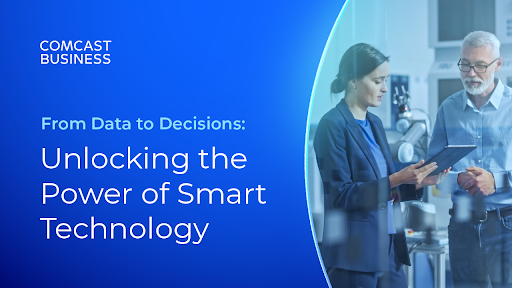Advances In Networking Technologies Quietly Enhance the Connected Experience

As networking technologies continue to advance—providing greater speed, capacity, agility, reliability and affordability—they are enabling distributed enterprises to provide their customers and employees with the always-connected experience they have grown to expect.
Guests of hotels, retail stores and even doctors’ offices take it for granted that they will be able to use their smart phones, tablets and other devices to check email, access important business documents, stream videos and more, at any time. Employees of even the smallest remote office/branch office (ROBO) locations expect immediate access to distant, cloud-based business applications, training resources and real-time inventory information. Corporate headquarters across the nation understand the impact networking technologies are having on both their employees and their patrons and are investing in making the changes necessary in their businesses.
While new devices and the latest killer applications frequently garner great fanfare, the underlying enabler of this connected world–the network–often remains the unsung hero. Here’s a look at six advances in networking technologies that are making our connections better every day.
- Advanced, affordable WiFi networks are allowing businesses of all sizes–from independent neighborhood coffee houses and retail stores, to mega office buildings and isolated manufacturing facilities, to metropolitan areas–to provide wireless connectivity to all employees and visitors. Ubiquitous hotspots, wireless local area networks, metropolitan area networks and wide area networks are allowing people to stay connected and enjoy all the benefits that conveys while away from home.
- Faster, scalable and more affordable bandwidth is helping businesses of all sizes to meet skyrocketing demands for more speed and capacity in the face of relatively flat IT budgets. Bandwidth-intensive applications such as video-based employee training programs and marketing campaigns, and on premise security cameras at ROBO locations viewed over the Internet, are growing in usage, enabled by greater, flexible speeds and capacity. Fast food restaurants are able to meet customer usage demands even during peak periods – affordably – because they can ramp up and down, with affordable, usage-based plans.
- Secure connectivity options are helping more enterprise businesses to adopt cloud-based services for the resources, benefits and cost efficiencies they offer. A common source of concern for many IT and other business executives continues to be the connection from the enterprise to the cloud, which could be via the Internet, a private, direct connection or a combination of the two. Many enterprises are addressing these concerns by choosing direct connections for business-critical applications, and the public Internet for less sensitive functions.
- Low-power emission technologies, think Bluetooth, combined with specially designed mobile applications, are allowing businesses to create new, highly personalized interactions with customers entering a location where the new system is engaged. When the mobile device with the application enters the range of the low-power network, it is recognized and connected, alerting employees to the customer’s presence. For example, a carry-out restaurant customer phones in an order. When entering the restaurant to pick up the order, the network automatically activates and notifies the kitchen staff, allowing them to present the order or provide immediate, personalized updates.
- Sophisticated data capture and analytics capabilities are making it possible for WiFi networks of retail operations to recognize repeat customers and their shopping preferences, and deliver specially tailored offers and promotions as they approach their stores. These personalized services enhance and expedite the shopper experience and allow retail employees to perform their jobs more efficiently.
- Robust networks, consisting of sensors, WiFi, scalable bandwidth, data centers and more, are enabling the Internet of Things, the estimated 20 billion sensor-driven devices in millions of locations constantly connecting and transmitting data. The benefits of all of this data being collected, analyzed and mined for critical business information, are just beginning to be realized through enhanced customer service and communication; employee productivity; business efficiencies and managed savings, and so much more.
As networking technologies continue to advance, often quietly behind the scenes, they will no doubt fuel the growth of more conveniences and capabilities that enterprises of any type can offer. Businesses, customers and employees alike all stand to gain from the ongoing digital journey to faster, better and more affordable connectivity.
As networking technologies advance, they're enabling enterprises to provide an always-connected experience.
Locked Content
Click on the button below to get access
Unlock NowOr sign in to access all content on Comcast Business Community
Resource Center
Learn how Comcast Business can help
keep you ready for what's next.











